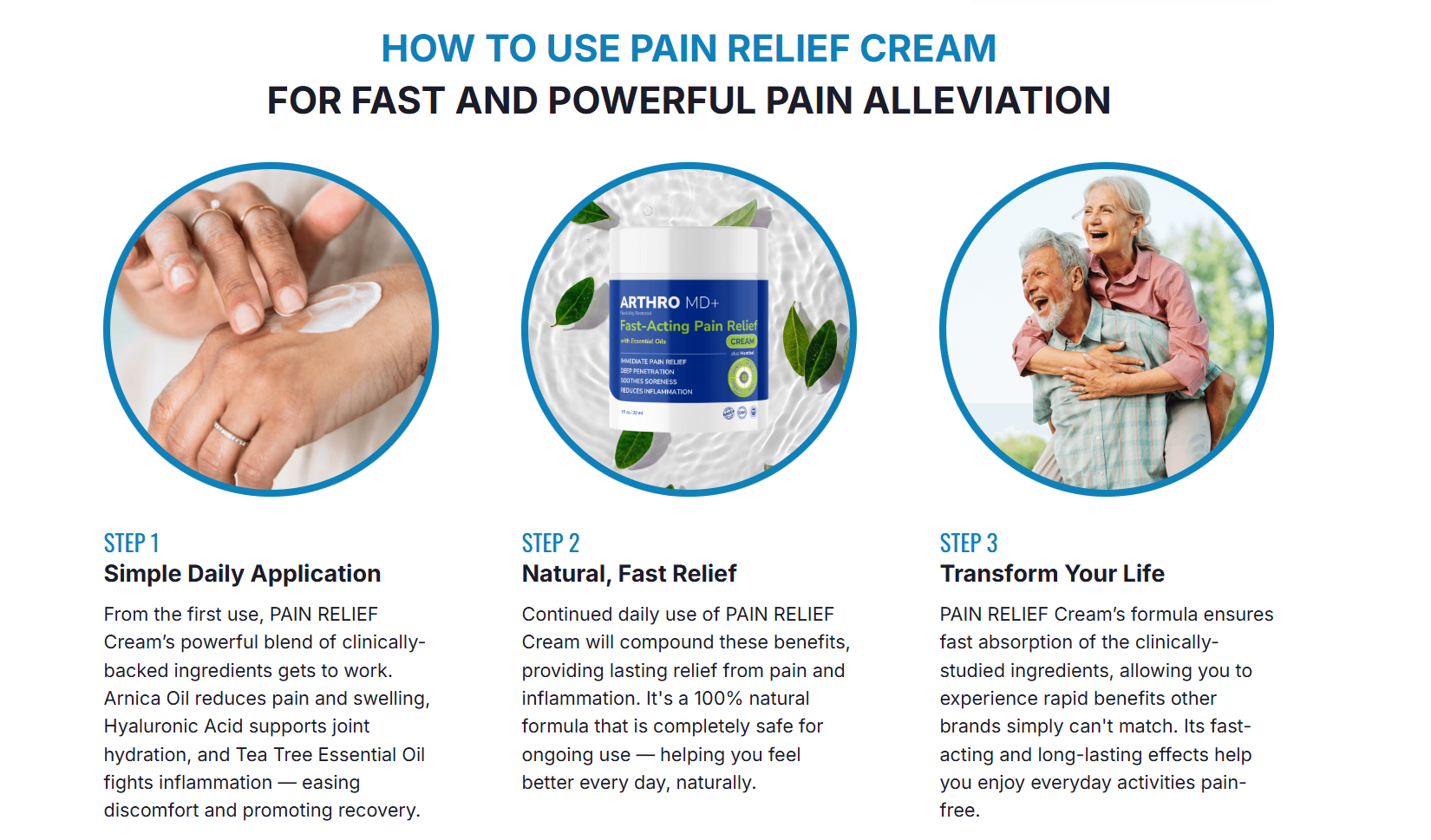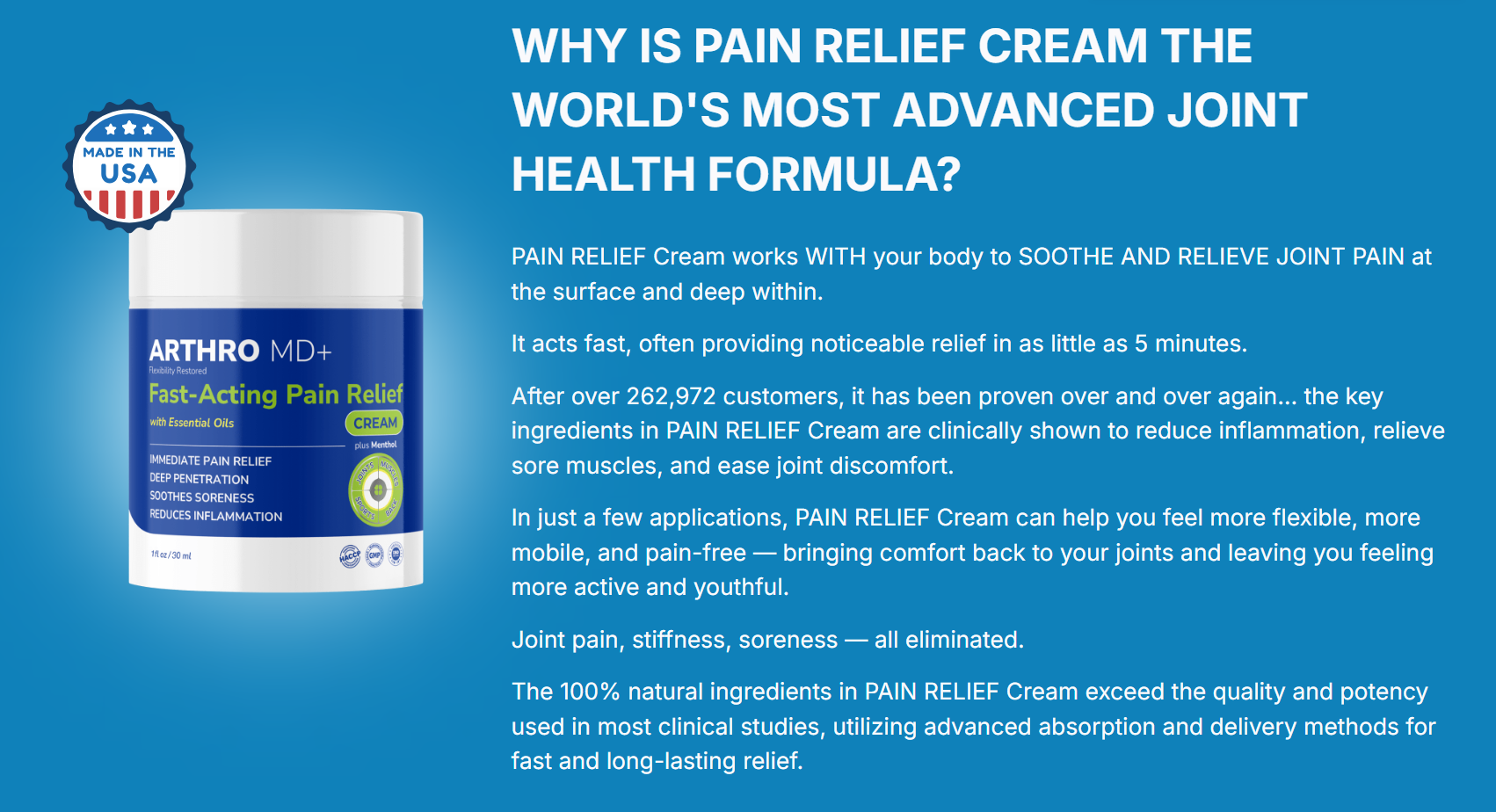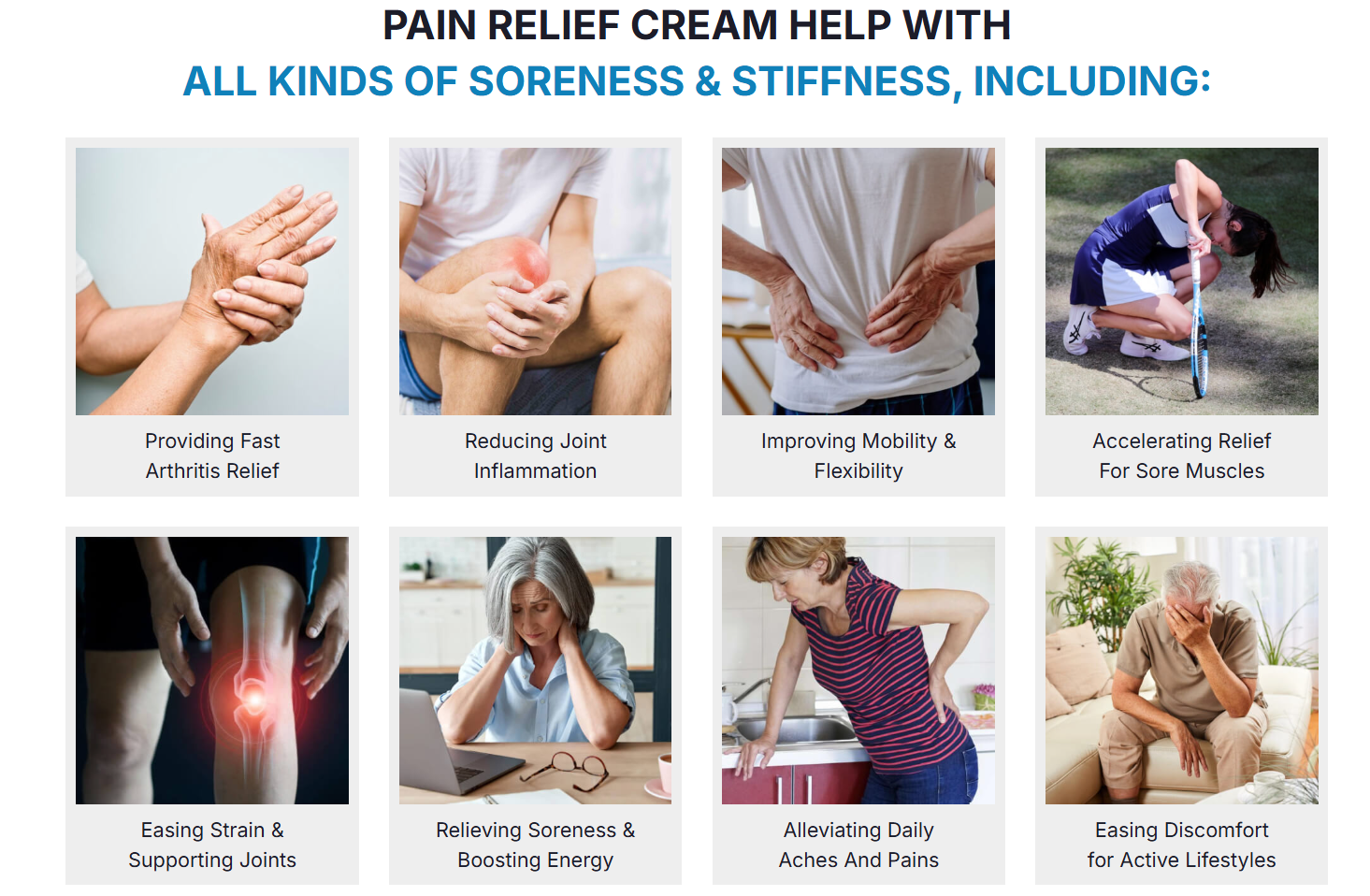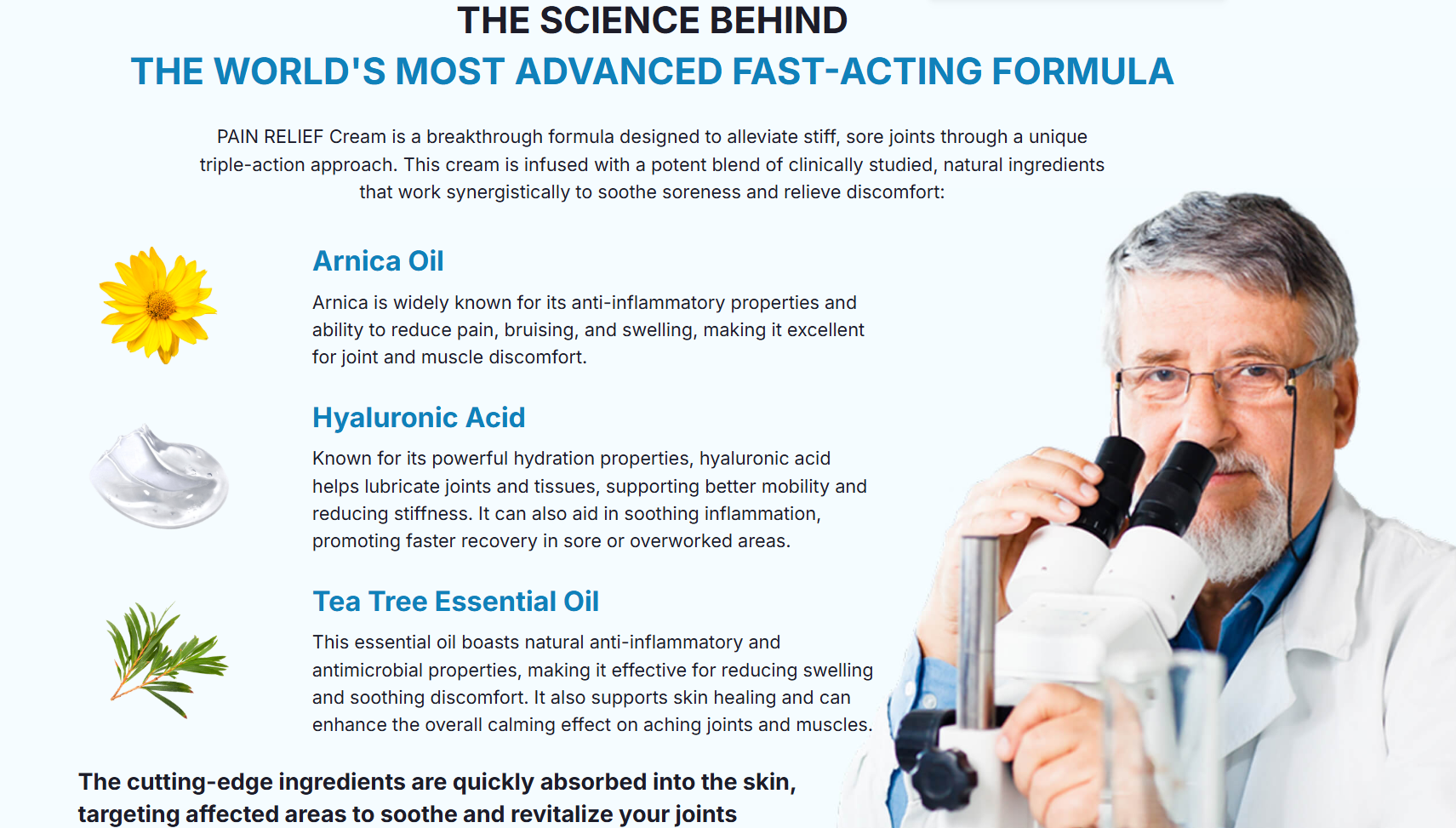Arthro MD+ Joint Support Complex Canada And UK Reviews 2025:
Millions of men and women experience joint mobility issues. The most common reason for joint complications is aging. AS we age, the lubrication becomes rough, collagen in the skin decreases, and inflammation makes it difficult to move. It is possible to reduce the symptoms with medication. What if you want an herbal solution? Not many are out there. However, there is one launched recently in Canada and the UK that is making waves in the joint support community. It is a plant-based cream, Arthro MD+.Visit the Official Website to buy or read more….
What is Arthro MD+ Joint Relief Cream?
Arthro MD+ Joint Relief Cream is a plant-based topical solution for joint pain and inflammation. Made with the highest quality herbal ingredients, it claims to improve mobility, flexibility, combat inflammation, and relieve stiffness.
Arthro MD+ Cream is not an alternative to prescription medication. It can help men and women who are experiencing mild pain and discomfort. This natural painkiller has its limits.
What makes Arthro MD+ Joint Relief Cream a unique product is the clinically supported ingredients. The herbal ingredients in this cream are proven to be effective in joint pain and discomfort. Few users claim to have gotten the product after their doctor’s recommendation. Therefore, in a way, few doctors recommend it.
Product Information
- Brand: Arthro MD+ in Canada & UK
- Flavor: Unflavored
- Supplement Type: Topical Cream
- Unit Count: 1
- Item Weight: 30ml/1 fl oz
- Age Range: Adults
- Pricing: $39.95 (Canadian Dollar)
- Money Back Guarantee: No
- Contact Information: contact@arthromd.com
- Visit the Official Website to buy or read more….
Who should try Arthro MD+ Cream Canada and UK?
- People with localized pain: Topical cream is more effective with joints that are closer to the skin, like knees, elbows, etc.
- Individuals with minor joint and muscle pain: Oral pain relievers can be addictive and have plenty of side effects. So, for minor pain, you can rely on a topical cream.
- Those seeking an alternative to oral painkillers: Arthro MD+ Cream is a plant-based topical cream. It can help with minor pain and joint discomfort.
- Elderly patients: In older patients, medication can be risky; they can try a topical cream, which has very little risk of side effects.
- Athletes or active individuals: Muscle soreness due to repetitive action can be treated with a topical cream.
7 Benefits of Arthro MD+ Joint Relief Cream Canada
- Targeted pain relief: When applied to the localized area, it can bring fast relief for joints closer to the skin, like knees and elbows.
- Improves mobility and flexibility: Reducing the pain and stiffness, Arthro MD+ Cream Canada can improve the range of motion and flexibility.
- Reduces inflammation: The key ingredient in this pain-relieving cream can numb the pain and actively reduce the swelling in the localized area.
- Rapid Action: The Active ingredients work fast and provide relief quickly.
- Easy and Convenient to use: You can apply cream anytime and anywhere. It is easy and convenient for elderly people.
- Can complement other therapies: Topical creams like Arthro MD+ Cream can be used in the broader pain management process along with physical therapy and oral medication.
- Alternative Prescription Medication: For moderate to mild pain, topical creams are effective.
Key Ingredients, working are scientific Research Behind them
-
Menthol
- What it is: A natural compound from the mint plant
- How does it work: Menthol is a counterirritant and a topical analgesic. When applied topically, it sends a cooling signal to the brain, distracting from feeling pain.
- Scientific Evidence: A 2020 review in the Journal of the American Association of Nurse Practitioners showed the usefulness of menthol in relieving pain.
-
MSM (Methylsulfonylmethane)
- What it is: AN organic Sulphur compound
- How does it work: It helps in reducing inflammation. Sulphur is a key mineral for healthy joints.
- Scientific Evidence: A 2018 meta-analysis showed promising results in treating the underlying symptoms of osteoarthritis.
-
Glucosamine Sulfate
- What it is: A natural compound found in cartilage.
- How does it work: Glucosamine is a building block of cartilage. It activates the cartilage healing process.
- Scientific Evidence: A systematic review and meta-analysis published in a 2014 study in the Molecule journal showed mixed results of glucosamine in pain relief.
-
Arnica Montana Extract
- What it is: AN herb from the daisy Family
- How does it work: It is a traditional medicine for muscle soreness, bruising, and pain. It works just like diclofenac topical gel.
- Scientific Evidence: A 2018 Cochrane review showed that Arnica improves pain and function.
-
Boswellia Serrata Extract
- What it is: A resin from the serrata tree.
- How does it work: It contains the boswellic acids, which have potent anti-inflammatory effects.
- Scientific Evidence: A 2021 systematic review shows that Boswellia extract is a powerful anti-inflammatory agent.
-
Hyaluronic Acid
- What it is: It is part of the synovial fluid in our body
- How does it work: Topical application improves collagen production. It improves the lubrication. Makes joint movement smooth.
- Scientific Evidence: A systematic review in 2024 shows the positive effects of hyaluronic acid when applied to knee joints.
First-hand 6-week Experience with Arthro MD+ Cream
Pros and cons of Arthro MD+ joint Support Complex
Pros:
- Plant-Based ingredients
- Non GMO
- Easy to use
- Lose risk of side effects
Cons:
- Only for mild to moderate pain and inflammation
- Internet exclusive product
- May cause redness
How to use?

The application process for this topic is easy. It is just like any other cream.
- Step 1: Wash the area where you want to apply the cream
- Step 2: Squeeze a small quantity of cream onto your fingers.
- Step 3: Apply small dots all over the area
- Step 4: Rub gently in circular motion
- Step 5: Gently massage the area for about 15 minutes. Now let it rest.
Avoid putting cloth over it.
Any clinical trials on Arthro MD+ Cream’s effectiveness?
The pre-launch clinical trial contained 100 participants with mild to moderate joint pain and inflammation who participated in the study.
- 92% participants experienced a pain reduction
- 87% participants experienced inflammation reduction.
Third-party testing is yet to be done.
Side effects of Arthro MD+ Joint Relief Cream Canada
This topical cream is made with plant-based ingredients. The risk of side effects is low. Few people experience these symptoms.
- Skin irritation
- Burning sensation
- Dryness
- Allergic reaction
What lifestyle changes help joint health besides Arthro MD+ Cream?
- Maintain a healthy weight
- Be physically active
- Avoid exercises that put stress on joints
- Eat healthy food rich in Omega-3
- Avoid processed food
Conclusion
Continuous joint pain and inflammation can take a heavy toll on life. It impedes mobility and makes you dependent on others. This pain and suffering can be avoided with the use of Arthro MD+ joint Support Complex. A plant-based topical cream with menthol and arnica root extract. It is an easy-to-use product with very little risk of side effects. Buy it from its official website,
Frequently Asked Questions
How often can I apply Arthro MD+ Joint Relief Cream Canada?2 to 3 times a day is the normal application average. Don’t apply more than three times a day. Consult a doctor if pain persists even after application of the cream.
Is Arthro MD+ cream available in Canada & UK?
Yes, this cream is available in Canada & UK. You can easily purchase it from its official website. It will be delivered in 3 to 5 business days.
Is Arthro MD+ Joint Relief Cream Canada and UK effective?
Yes, Arthro MD+ Joint Relief Cream is effective in reducing mild to moderate joint pain and inflammation. The science-backed ingredients are clinically proven to work.
Is Arthro MD+ cream safe to use for the long term?
Yes, this cream is safe to use for the long term. All ingredients are herbal in nature. However, we recommend consulting a doctor before you start using this cream.
Can I use Arthro MD+ Joint Relief Cream with a bandage or heating pad?
No, do not use any topical cream that is not recommended by a doctor for such a purpose.
Disclaimer & Copyright
The content on AmericanPainSociety.org is provided for general informational purposes only and should not replace professional medical advice, diagnosis, or treatment. We make no guarantees of accuracy, completeness, or timeliness. Users rely on the information at their own risk. Always consult qualified professionals for healthcare decisions.
© 2025 American Pain Society. All rights reserved. No part of this website may be reproduced, distributed, or transmitted in any form or by any means without prior written permission.



